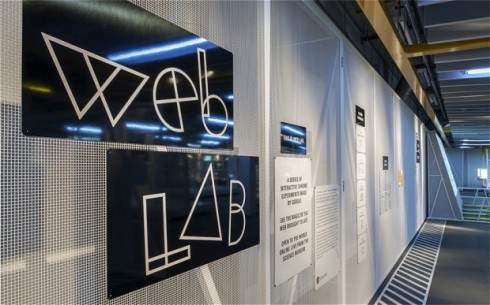
Yonks ago (I forgot to hit publish on this post!), Glug held a notworking digital event in Shoreditch, loosely based on the theme of collaboration. I’m a bit of a stickler for sticking to a theme. That said, the evening got me thinking about how technology has driven this new surge in collaboration, a lot…
Your comfort zone vs. where the magic happens
Making awesome things that have never been made before requires partnering with experts, mixing talents, and undoubtedly doing things outside of your comfort zone. Collaboration enables you to go places you couldn’t go alone. Take B-reel’s VW Bug Run – a beetle race but not with cars, but with real life beetles. A project that wouldn’t have been possible without an array of talents, including a dedicated bug wrangler – Magnus Forsberg – overseeing the bugs.
B-reel made a good case for fighting for values, not the end product. Agencies that focus on the end product will ultimately suffer. Clients problems come in many forms, and undoubtedly the same old solutions won’t always be the answer. Modern communication agencies need to be agile and mentally flexible in order to solve diverse client problems in a multitude of ways. It’s time to break out of the silo and make operating out of your comfort zone the norm, because that’s where the magic happens.
The best and most rewarding projects I’ve ever had the pleasure to work on have all encountered the ‘holy shit’ moment, i.e. the moment you ask yourselves…are we actually doing this?! I wouldn’t have it any other way.

(image via 9GAG)
The whole is greater than the sum of its parts
The web is a wonderful tool for bringing people together. It is now easier than ever to collaborate with different people, from different cultures, from all walks of life, all without even leaving your desk (which doesn’t mean you shouldn’t). And when people come together, no matter how far or wide, powerful things can happen. Distance is increasingly meaningless. The speedy success of #IncludeDesign, the web-based campaign to get creative on the curriculum, wouldn’t have been possible without the Internet and a shared passion for creativity.
The people behind this fantastic project understood that there’s nothing more else powerful than the collective voice. So through the power of the web (and potentially a few phone calls) – they recruited 350 companies, celebrity ambassadors (including Stella McCartney) and an astounding 5,500 responses to the Government’s EBacc consultation. Here’s hoping their collective voice is heard.
Blended reality
For years we’ve been debating the digital agency versus the traditional agency. When the lines are increasingly blurred, not only will we collaborate across disciplines, but disciplines will overlap and integrate. The lines have blurred to the point where digital has become reality and the digital revolution has become blended reality (or post digital as some might say). We will probably be the last generation to ever utter “I’m going on the Internet”.
“One of the things our grandchildren will find quaintest about us is that we distinguish the digital from the real, the virtual from the real.” – William Gibson
Collaborative culture is not a temporary phenomenon, but a trend that is likely to accelerate over the next decade. The reality is in a few years from now, most traditional ad agencies will have gotten rid of their digital titles. As Brad Pitt would say, it’s inevitable. We need to build collaborative cultures to support fuzzier relationships between people, departments, and even outsiders.
Perpetual beta
The web has created a more participatory consumer. Which means collaboration is not limited to behind closed doors; collaboration in this economy is public too. The mindset of Google’s “perpetual beta” provides a way of collaborating with the end user, to make awesome things even more awesome. Google regularly launch things in a trial state (Gmail was in fact in beta for five long years). Google’s Web Lab (the latest project from Google Creative Lab) is a series of interactive Chrome experiments which brings the magic of the web to life – live from the Science Museum, and even open to the world online 24/7. Which means Google can continue to collaborate with users, anywhere in the world, even after the museum is closed for visitors.

This shift from the “we know best” mindset to the perpetual beta mindset is spreading, and prototyping in public is everywhere. Digital campaigns were once perfected and polished before they were released to the world. With the beta mindset, digital is unfinished, experimental, iterative, and never complete.
Powered by Actimel, HyperNaked recently launched the Family Wellbeing Index – a brand new way of measuring family wellbeing (disclosure – I am proud to have worked on this project). Everyone knows what family wellbeing feels like, but the concept of family wellbeing is difficult to pin down – it has been described by experts as “intangible, difficult to define, and even harder to measure”. Due to the enormity and uncertainty of the challenge, we launched the site in beta. We spent the first five months testing learning and optimising in real time. The plan was always to iterate and optimise the index with a small group of real mums and mummy bloggers, before taking an improved version to the masses. A rather brave move by Actimel.
The thing is, technology has fuelled the collaboration economy, but collaboration is ultimately about people not technology. Magic happens when you have a shared vision and a bunch of passionate people. We can make more never-seen-before awesome stuff together by collaborating with insiders and outsiders. Who’s with me?
